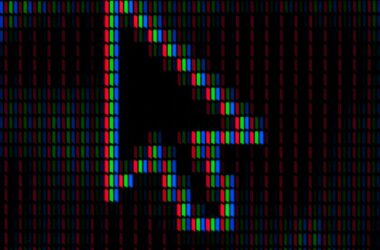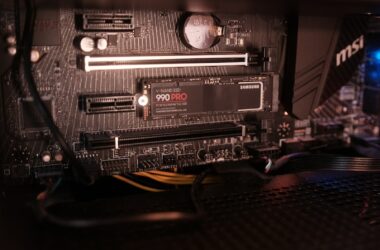Let me tell you… finding a server that is under $1000, has 10Gb ethernet, and m.2 slots for cache acceleration is quite a feat. For whatever reason, there are just not many options that I can recommend. In fact… there are technically zero options that meet these requirements.
The good news though is that you can find servers that have m.2 caching for speeding up video playback and are under $1000… but you have to also get an expansion card to install post-purchase. Still, it will save you a few hundred so it’s not a terrible sacrifice.
QNAP and Synology. They are pretty much the makers of all consumer servers on earth. There are options from other brands, but these will not meet our budget requirements. What are we waiting for? Let’s begin.
Team Synology
Synology makes very reliable servers. I used them back when I worked at Disney and they gave me zero issues. I have also recommended one to the legendary content creator, Ben Hararty for backing up all of his footage. Even though I do not own a Synology, I can vouch for them across multiple professional experiences.
The Synology DS923+ is my top pick for its ease of use and top-notch support. However, the networking leaves a lot left to be desired which is why we will also be pairing this NAS with a PCIe 10G networking card to ensure speedy playback.
|
Description: The 4-bay Synology DiskStation DS923+ is easy to scale and expand as your needs change, with optional support for up to 9 drives, 10GbE networking, and NVMe SSD caching. |
Description: Supports 10/5/2.5/1GbE connections to work with nearly any RJ-45 network environment. Designed for maximum performance and reliability in Synology systems. |
|
$644.99
|
$109.99
|
The 4-bay Synology DiskStation DS923+ is easy to scale and expand as your needs change, with optional support for up to 9 drives, 10GbE networking, and NVMe SSD caching.
Supports 10/5/2.5/1GbE connections to work with nearly any RJ-45 network environment.
Designed for maximum performance and reliability in Synology systems.
Team QNAP
QNAP has always been my go-to because I simply like the OS better. It has more customization, and handy features like HBS3, and is usually slightly higher-speced than a Synology at a similar price. Case-in-point. This rig boasts a quad-core processor vs Synology’s dual-core. It also has an additional 4 GB of RAM and a few extra USB ports.
This particular video editing server also has the Oracle-developed ZFS vs the Synology-developed BTRFS. Personally, I’d go with ZFS any day.
One of the main benefits of ZFS is its ability to provide a high level of data integrity by checking and repairing data on the fly. This means that if any data becomes corrupted, ZFS can detect and fix the problem automatically. Another unique feature of ZFS is the ability to take snapshots of the file system at any point in time. These snapshots can be used to quickly restore the file system to a previous state, making it useful for disaster recovery. Additionally, ZFS supports data compression which can greatly increase storage efficiency and improve performance.
Just like Synology though, the networking is mid at best. So we will also be adding a PCIe expansion card. This one however has two ports which are perfect if you need to collaborate with another editor.
|
Description: Featuring an AMD Ryzen V1500B quad-core processor. The TS-x73A features two 2.5GbE RJ45 ports and two PCIe Gen3 slots for you to flexibly deploy 5GbE/10GbE networks. Two M.2 NVMe SSD slots for Qtier Technology and SSD Caching enable constant storage optimization. |
Description: Dual 10GbE (10G/5G/2.5G/1G/100M) ports allows connecting to multiple high-speed networking devices. |
|
$779.00
|
$115.72
|
Featuring an AMD Ryzen V1500B quad-core processor. The TS-x73A features two 2.5GbE RJ45 ports and two PCIe Gen3 slots for you to flexibly deploy 5GbE/10GbE networks. Two M.2 NVMe SSD slots for Qtier Technology and SSD Caching enable constant storage optimization.
Dual 10GbE (10G/5G/2.5G/1G/100M) ports allows connecting to multiple high-speed networking devices.
Drives for SSD Caching
When working with large video files, the read and write speed of the storage devices is crucial. Traditional hard drives, also known as HDDs, have a slower read and write speed compared to solid-state drives (SSDs). This can cause delays and bottlenecks when working with high-resolution videos, leading to a frustrating editing experience.
SSD caching can help solve this problem by using a small amount of SSD storage to cache frequently accessed data from the HDD. This allows the system to access the data at lightning-fast SSD speeds, rather than slower HDD speeds. This results in faster video playback, faster file access, and faster rendering times, making the overall editing experience much more efficient.
Additionally, SSD caching can also reduce wear and tear on hard drives, which can prolong the lifespan of storage devices. This can be particularly important for video editing servers that are in constant use.
Using SSD caching in video editing servers can greatly improve performance, making the editing process faster and more efficient, and also prolonging the life of the storage devices. In every device I’ve built, I always have at least 500Gb of super speedy NVMe drives in RAID 1 for data redundancy in case of failure (though, to this date this has not happened… but it could).
Important Note: Synology NAS systems have compatibility issues with non-Synology branded SSDs. So, if you are buying a Synology NAS, make sure to also buy Synology SSDs. QNAP, on the other hand, QNAP does not and I have had great success with Samsung drives.
Synology SSD Picks:
|
$139.99
|
$269.99
|
QNAP SSD Picks:
|
$128.00
|
|
As we can see, even though Synology has a lower base price… once you start adding the necessary SSD caching… the QNAP becomes the better and cheaper option. The walled garden of the Synology can drive the prices up a bit whereas QNAP is a bit more flexible with whatever you through at it. Now… let’s discuss the best hard drives for your video editing server.
Hard Drives for Storage
Both of these servers are dry which means that you must bring your own drives. Honestly, there are not too many differentiators between drive choices. Just make sure they have the capacity you need and a speed of 7200rpm. Seagate and Toshiba are my go-tos and have used them in every server build with zero issues. Toshiba drives are around 30Mb/s faster and will last a little longer… but a is a bit more in price. If you have money to spare, I would get the Toshibas but Seagates are still a great choice.
Sidenote: I do not recommend “shucking” cheap portable hard drives like a Western Digital My Book to save a quick buck. Those drives usually contain slow 5200 RPM drives that are “b-spec” and didn’t pass the quality control to be sold as OEM server drives. I have seen many of these fail in servers. In my opinion, It is not worth the marginal cost savings. Now, if you are using this for data that isn’t super important… then sure, it will probably be alright. But I still don’t trust it.
But wait… how much storage do you need? Well to start, it is helpful to understand how RAID works. You can learn more about RAID here. Once you have figured that out, it is time to purchase.
|
$179.99
|
$200.91
|
$248.49
|
$315.10
|
|
|
$379.99
|
N/A
|
$489.99
|
After going through the best budget server, optimal networking expansions, SSD picks for caching, and the necessary server hard drives, I am happy to say that you have everything you could possibly need to get started with video editing from a Network Attached Storage (NAS).
What would I choose? Well, I still pick the QNAP TS-473a. At the end of the day, it has better software features and is more hardware-agnostic. Though, if you intend to use this server as more of an archive and less as an active editing platform, you can bypass the SSD caching and get the cheaper Synology DS923+.
Oh! And don’t forget the best folder structure in the universe 😎. It has all the necessary folders and tools to make sure you are organized and efficient in your video editing endeavors.

Professional Folder Structure for Premiere Pro and DaVinci Resolve Bundle
A professional post-production folder structure perfect for editing projects large and small. Designed for Premiere Pro and DaVinci Resolve workflows.
























